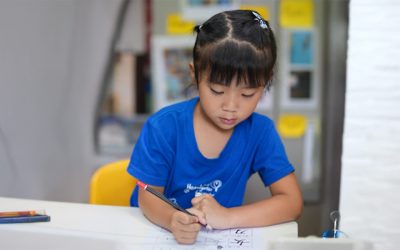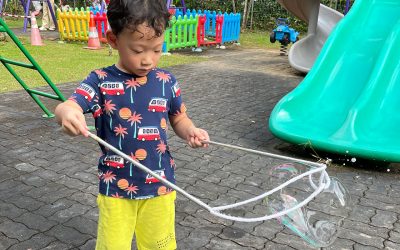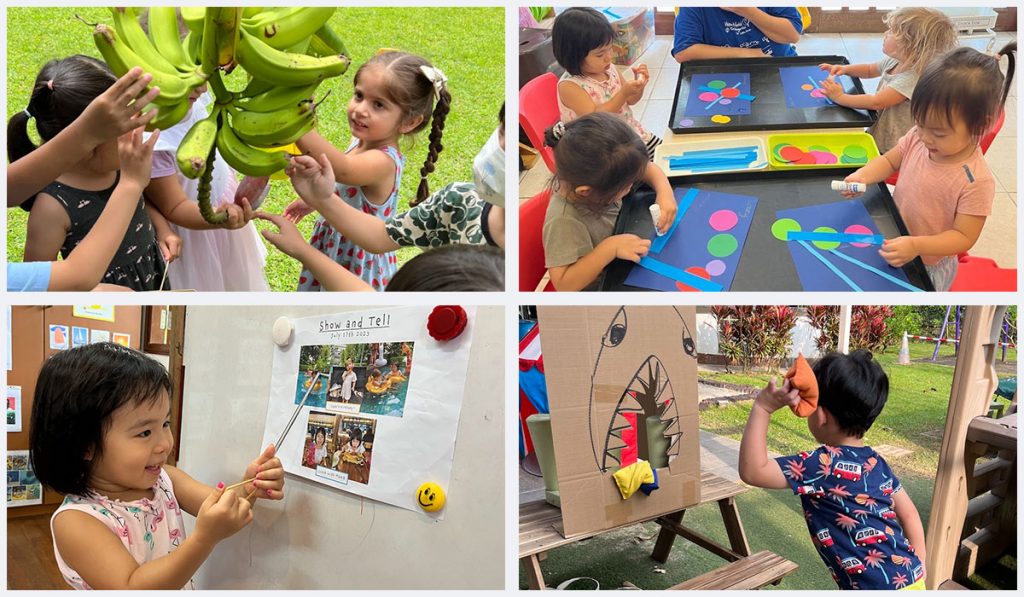
You’ve probably seen it—your child quietly sorting buttons by colour, or making up songs while getting dressed. Yet when it comes to writing words on a sheet of paper, he just can’t sit still.
Maybe you’ve also noticed how some children are natural storytellers, able to regale an attentive audience. Others come alive outdoors—spotting ants, collecting leaves, or watching the clouds.
These aren’t just quirks. They’re clues to how children learn best.
Psychologist Howard Gardner called this the Theory of Multiple Intelligences. He believed that intelligence isn’t a single ability, but comprises many distinct dimensions.
Some children are drawn to language, music, or movement. Others are more logical, self-aware, or socially attuned. Recognising these strengths helps us look beyond test scores or worksheets, and see the whole child.
In this article, we’ll explore what multiple intelligences are, why they matter in early education, and how you can support your child’s learning style, both in school and at home.
What are the Multiple Intelligences?
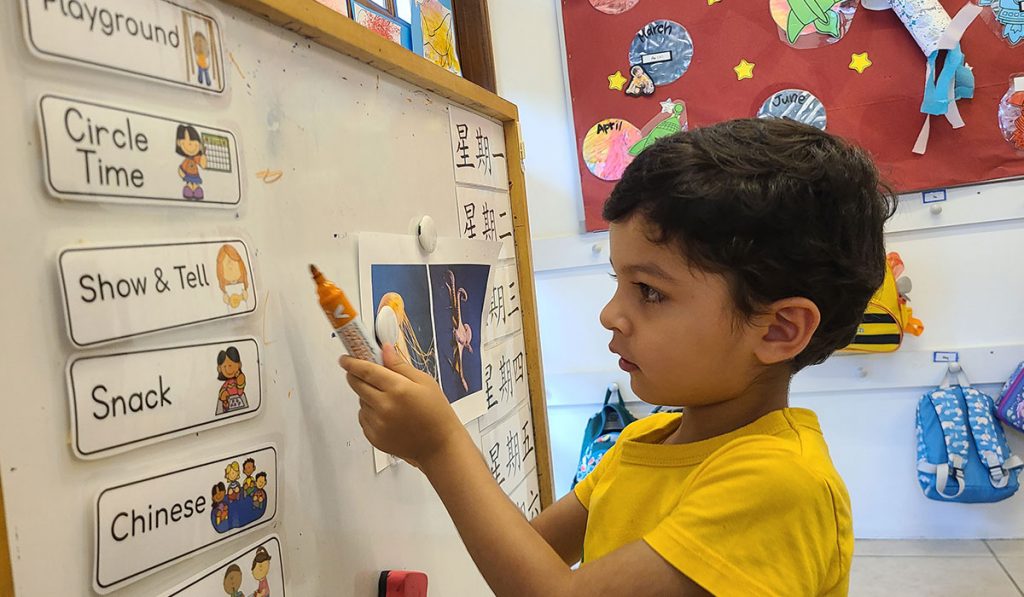
When we think of intelligence, we often picture a child solving maths problems or reading fluently. However, according to developmental psychologist Howard Gardner, that’s only part of the story.
Gardner proposed that intelligence isn’t a single number or score—it’s a combination of different ways we understand and interact with the world. He defined it as “the capacity to solve problems or to fashion products that are valued in one or more cultural settings.”
In other words, being “smart” can look very different from one child to the next.
According to Gardner, there are eight core intelligences that we should consider:
#1 Linguistic-Verbal Intelligence
Children with this strength often enjoy words. They express themselves clearly through speech or writing, love for stories or songs, and respond well to language-rich activities like reading aloud or rhyming games.
#2 Logical-Mathematical Intelligence
Numbers, patterns, and puzzles appeal to this type of learner. Rather than memorising, they enjoy figuring things out—whether that’s through sorting objects, asking questions, or experimenting to see what happens next.
#3 Bodily-Kinesthetic Intelligence
These children understand the world by moving through it. They’re often drawn to physical play, role-play, or building things with their hands. Movement helps them focus and absorb ideas more effectively than sitting still.
#4 Musical Intelligence
A strong awareness of rhythm, melody, and tone often appears early. These children might sing to themselves, respond to music emotionally, or tap out rhythms during everyday activities. Music helps them learn and express ideas.
#5 Visual-Spatial Intelligence
This form of intelligence involves thinking in images. A child might enjoy drawing, solving visual puzzles, or imagining how things fit together. They often have a good sense of direction and a strong interest in design or construction.
#6 Interpersonal Intelligence
Children with this strength tend to notice how others feel. They form relationships easily, work well in groups, and often take on the role of peacemaker or helper during play. Social interaction comes naturally to them.
#7 Intrapersonal Intelligence
Some learners are especially attuned to their inner world. They enjoy reflecting, prefer working alone, or making thoughtful decisions based on their interests. These children display quiet confidence and strong self-awareness.
#8 Naturalistic Intelligence
A deep curiosity about the natural world is common here. These children are drawn to plants, animals, and outdoor exploration. They may notice patterns in nature, or feel calm and focused when outside.
Why Do They Matter in a Kindergarten?
So, how do these different intelligences shape the way we teach in preschools? Plenty, it seems.
When teachers appreciate how children learn in different ways, their classroom transforms. Learning becomes more than worksheets or reciting facts. It becomes a place where each child feels seen—one where their unique way of understanding the world is not only accepted but celebrated.
By using the lens of multiple intelligences, our kindergarten teachers can:
- Tailor lessons to match each child’s natural strengths, so more children stay engaged and interested.
- Support whole-child development, nurturing not just academic growth, but emotional, physical, and social confidence too.
- Create more opportunities for success, especially for children who may struggle with traditional approaches but thrive in other areas.
- Encourage lifelong learning habits by building a broad foundation of skills—from teamwork and communication to reflection and curiosity.
In preschools that embrace this approach, no child is left behind or labelled “less smart.” Instead, they grow up knowing that intelligence comes in many forms—and that their way of learning matters.
Examples of Kindergarten Activities to Boost Different Intelligences
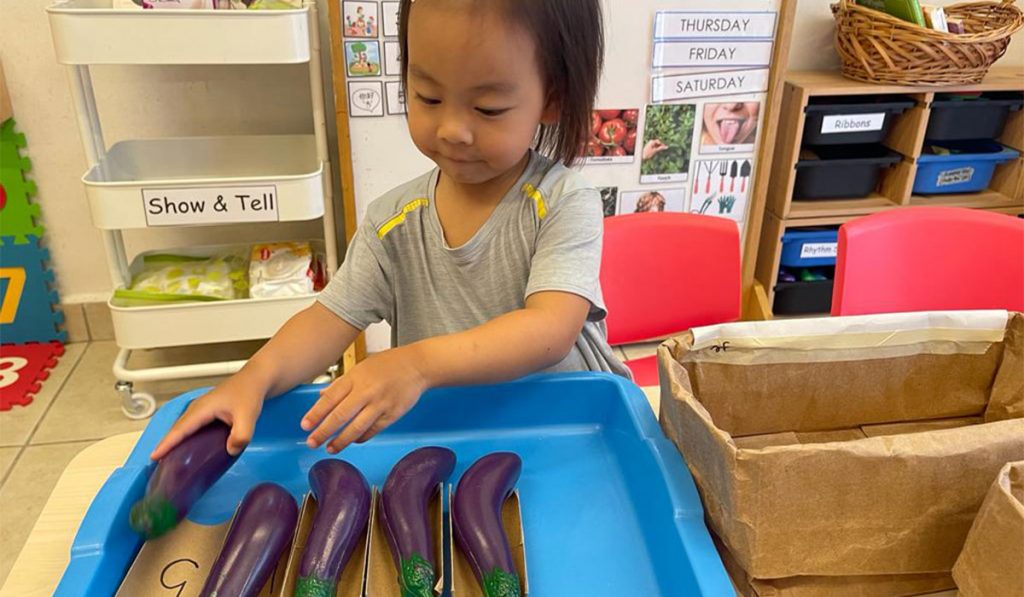
How do these ideas come to life in a kindergarten?
We like to use open-ended activities to nurture kids with different intelligences. As they do not have a specific “right” outcome, children can experiment, imagine, and lead their learning journey.
For example, children may build a city from recycled materials, create a make-believe restaurant complete with menus and roles, or design an art collage using twigs, leaves, and other found objects.
Such tasks simultaneously appeal to multiple intelligences—language, spatial awareness, social interaction, and even bodily movement. They also develop creativity, problem-solving, and self-direction.
Now, let’s look at how different intelligences can be supported with specific activities.
Linguistic-Verbal Intelligence
Children who enjoy language flourish when stories and words are part of their daily routine. Share stories during circle time and explore new vocabulary through rhymes and read-alouds. You can also encourage them to create mini-books based on their own experiences.
Logical-Mathematical Intelligence
These learners enjoy solving problems and recognising patterns. Provide puzzles and matching games to stimulate their thinking.
Sorting objects by size, colour, or shape helps develop early categorisation skills. Simple science tasks—like mixing colours or observing what sinks or floats—further encourage them to explore cause and effect.
Bodily-Kinesthetic Intelligence
Children with this strength learn best through movement and touch. Use physical games or role-play to introduce concepts in an active way.
Let them work with clay, scissors, or construction tools to create with their hands. Acting out stories or emotions also helps them process ideas through their bodies.
Musical Intelligence
For many, music is more than entertainment—it’s a way of understanding. Sing songs to reinforce learning and create familiarity with routines.
Explore rhythm using claps, stomps, or simple instruments from everyday items like pots and cups. You can also set key ideas to melodies to help with memory and engagement.
Visual-Spatial Intelligence
These learners think in pictures and enjoy creating or arranging objects visually. Offer materials for drawing maps, making collages, or sorting shapes and images. Building with blocks or loose parts also supports spatial awareness.
Children may also enjoy responding to music by moving with ribbons or scarves, connecting sound with motion and form.
Interpersonal Intelligence
Social learners thrive in group settings and pick up on emotional cues quickly. Invite them to take part in community projects like visiting a nursing home.
Group art or cooking projects allow them to collaborate meaningfully with others. Role-play and peer leadership activities also help them learn about cooperation and empathy.
Intrapersonal Intelligence
These children are often reflective and self-aware. Provide quiet spaces for drawing or journaling so they can explore their thoughts. Let them choose activities that match their interests or moods. One-on-one conversations further build trust and emotional language, which supports their inner growth.
Naturalistic Intelligence
Nature-loving children thrive in the outdoors. Observe insects or plants in the garden and talk about what they notice. Let them sort natural objects like shells, rocks, or leaves. Involve them in projects like a community garden or explore seasonal changes and animal habitats together.
How to Teach Multiple Intelligences at Home
Keen to develop your child’s multiple intelligences as a parent? Here are some easy ways to get started.
Start by noticing what your child enjoys and does well. Do they love building things, singing, telling stories, or caring for pets? These preferences can offer clues about how they learn best.
Next, offer a wide mix of toys, books, materials, and activities that touch on different areas—words, numbers, art, music, movement and nature. Let your child explore freely and follow their curiosity.
Consider asking open-ended questions like “What do you think will happen next?” or “How else can we try this?” Such questions invite deeper thinking and discovery.
Do also affirm all kinds of success, not just the academic ones. Praise creative problem-solving, kindness, perseverance, or thoughtful reflection.
Finally, don’t forget to make time for quiet play or self-directed tasks—sometimes, the richest learning happens when children feel trusted to lead their own exploration.
When children grow up knowing there’s more than one way to learn or be “smart,” they build confidence in who they are—and stay curious about what they can become.
How Heartfield Kindergarten Incorporates Multiple Intelligences in Its Curriculum
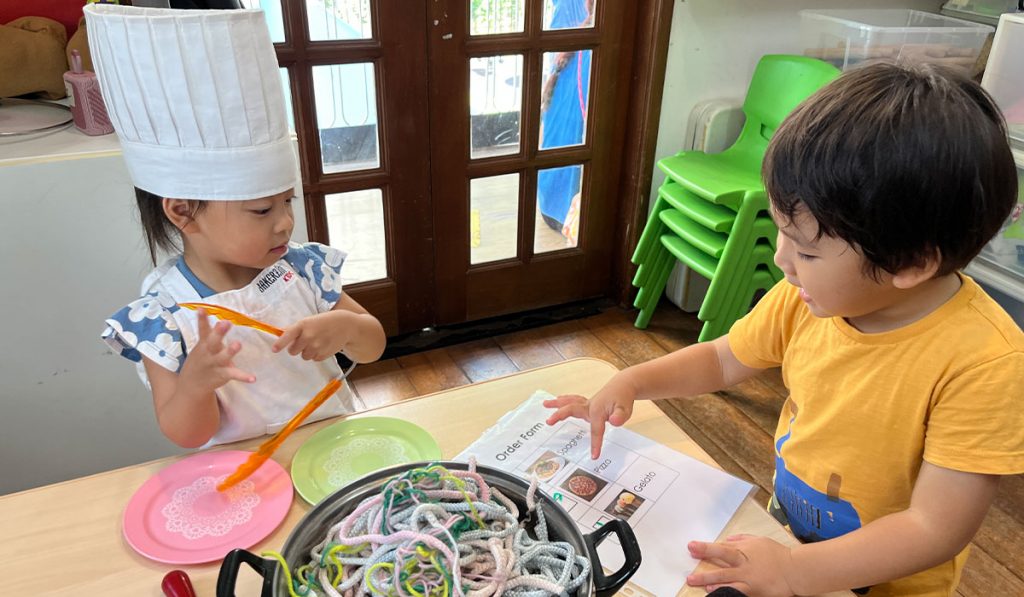
At Heartfield, every child has their own way of learning—it’s our job to help them discover it.
We don’t adopt a one-size-fits-all approach. Rather, we deploy a theme-based curriculum that allows children to explore through movement, music, storytelling, art, nature, and more.
Each topic becomes a doorway into different types of learning, empowering our children to make sense of the world in ways that feel natural to them.
On any given day, you’ll see Heartfield kids moving between spaces designed for building, painting, role-play, reading, or quiet reflection. Some may work closely with a friend on a group project, while others focus on something independently.
Our teachers observe gently and guide with purpose. They recognise each child’s learning patterns, nurture their interests, and emphasise their strengths. We avoid labels. Instead, we look for the spark—what makes each child come alive.
When all eight intelligences are honoured, every child can shine. That’s what matters most to us.
Because at Heartfield, learning isn’t just about what children know. It’s about who they’re becoming—and how confidently they step into the world.
Located at 31 Balmoral Road, we invite you to see how we incorporate multiple intelligences into our curriculum. Call us at +65 6835 2354, email info@HeartfieldKindergarten.com, or visit our website to arrange a visit.

